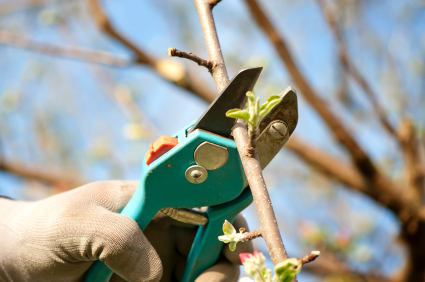 A little knowledge is required for efficient cutting and forming, and more experience acquired. A worker who is not trained to cut wastes a lot of time meditating, before he decides, which branches should be removed, and which to leave. An experienced worker notices the branches to be cut at a glance, when he comes to the tree, without wasting any time thinking. He obtains work efficiency 2-3 times higher than inexperienced.
A little knowledge is required for efficient cutting and forming, and more experience acquired. A worker who is not trained to cut wastes a lot of time meditating, before he decides, which branches should be removed, and which to leave. An experienced worker notices the branches to be cut at a glance, when he comes to the tree, without wasting any time thinking. He obtains work efficiency 2-3 times higher than inexperienced.
On farms with hired labor, skilled or skilled workers should be hired for cutting, as is the case with large state-owned farms, train the appropriate group in this regard and do not separate anyone from this group for other work.
The highest work efficiency is obtained when cutting similar trees for a longer time. Moving from a young orchard to an old orchard, or from one variety to another, it requires workers to get used to the different shape of the crowns. If the accommodation unit consists of several varieties, they require slightly different treatment, you must either cut each of the varieties one by one separately, or assign workers to trees of specific varieties and explain how each is to be cut. For piecework, rates need to be adjusted to the variety and age of the trees.
The quality of the tools has a huge impact on work efficiency. Working with a tool made of bad steel, or the dull man may require twice as much effort as working with a suitable tool. Sekatory, balls and knives need to be sharpened daily. On a large farm, each of the employees working on cutting should have 2 tool kits. While one set is in use, the second one can be prepared for work the next day. Sharpening and repairing tools should be entrusted to a qualified employee in the workshop.
The amount of work involved in cutting depends on the species, varieties, rootstocks and aged trees and shrubs. The expenditure on pruning the most important species of fruit trees and shrubs is summarized in the table. Most of the data comes from the book of E.. Makosza "Sad with a pencil in his hand”.
Table. Labor effort for pruning the most important species of fruit trees and shrubs
| Species | Time spent | for cutting |
| in minutes per tree | in hours on 1 Has | |
| Strong growing apple trees | 18-25 | 120-160 |
| Dwarf apple trees | 6-12 | 100-170 |
| Vigorously growing pear trees | 15-20 | 100-140 |
| Dwarf pear trees | 3-8 | 60-130 |
| Green leaves of plum trees | 8-10 | 70-90 |
| Hungarian plums | 10-15 | 90-150 |
| Cherries | 10-20 | – |
| Black and red currants | – | 150-250 |
| Gooseberry | – | 120-290 |
| Raspberries | – | 250-400 |
In commercial plantations, cut branches are removed mechanically and transported outside the orchard, or crushed and left in place. The first method can be recommended primarily on small plantations, the second way - on large ones. Scraping has this advantage, that the plantation remains clean. If the branches are broken up and remain in the orchard, some parts of the branches, after drying and hardening, are the cause of punctures in the tires of tractors and other machines. Scraping branches, and in very small plantations, even manual picking and disposal takes a lot of time and energy. You can recommend them there, where the purchase of a shredder for branches is unjustified, the rows in the orchard are short, the distance to the place where the branches are burnt is small. The width forks are used to rake up and remove the branches 2 m and length 2,8 m, mounted on the three-point linkage of the tractor. After cutting, the branches must be arranged in shafts in the middle of the row. The tractor is driven in reverse and the branches are shoved onto the forks. The full forks are raised on the tractor's linkage and transports the branches to the landfill.
Branches arranged in the middle of the inter-row can be crushed with a shredder, Hungarian production RZ-1.5 or RZ-3. The first one has a working width 1,5 m, other – 3 m.
Matecki at the Institute of Pomology and Floriculture compared the time consumption of different ways of removing branches in a 17-year-old apple orchard, planted at a distance of 8X6 m. Efficiency was achieved when the branches were removed by horse-drawn platforms 0,06 ha/h, and when removing the branches on the forks 0,43 ha/h. Using the RZ-1.5 branch shredder was achieved 0,82 ha/h, while using the RZ-3 shredder, time consumption was achieved 1.24 ha/h. The cost of the RZ-1.5 shredder is five times higher than that of the forks.